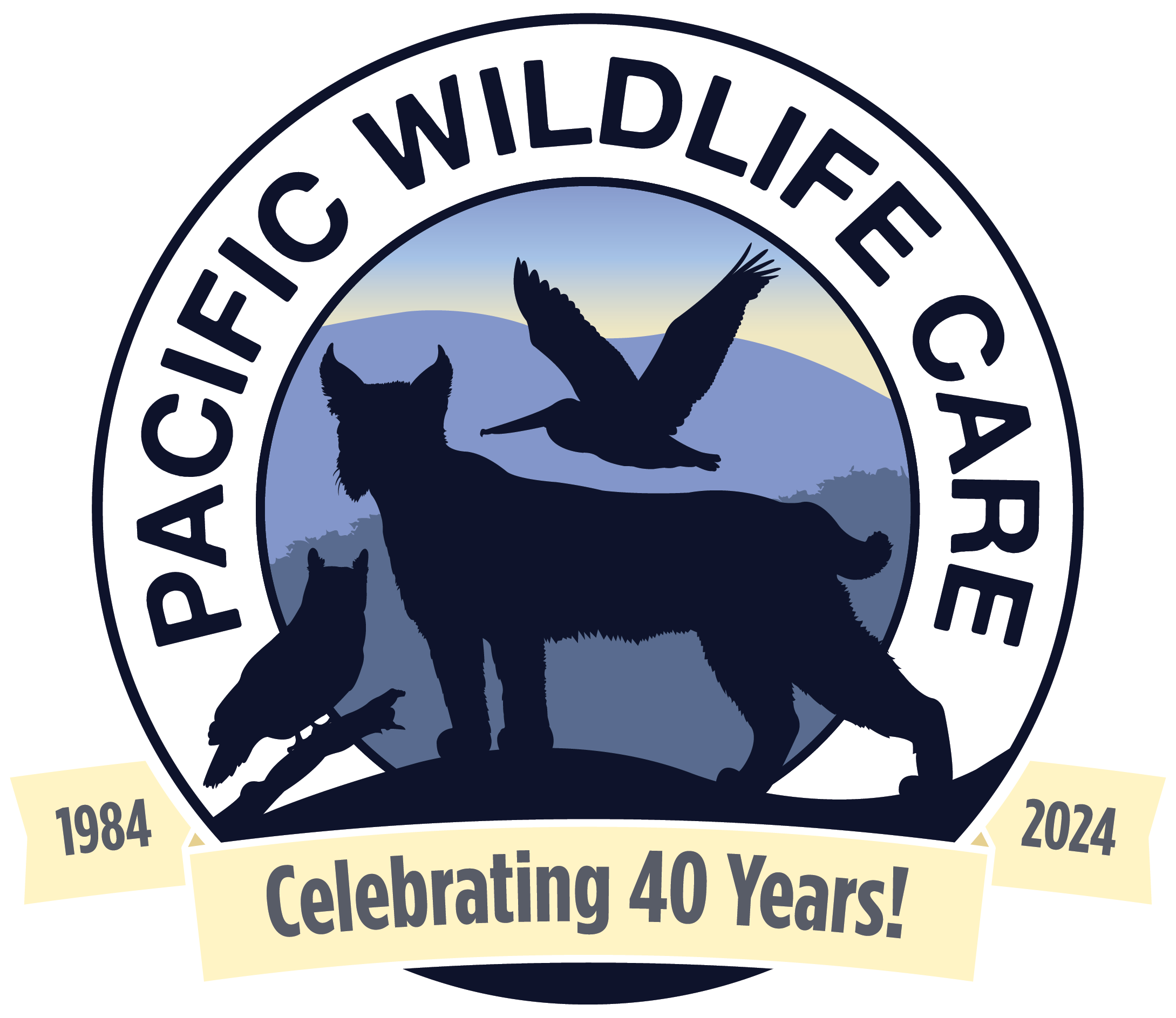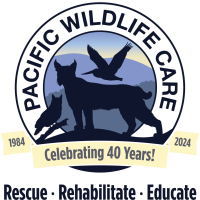What Happened with Those Baby Bats?
A small cadre of PWC staff and volunteers gained a new level of appreciation for bats this summer, when they were enlisted to care for a group of Mexican free-tailed bat pups brought to the clinic after falling to the ground from their overpass roost in the scorching Bakersfield heat wave.
The pups had fallen by the thousands. Bat biologist Erika Noel and biologist Brooke Stutz collected as many of the living as possible and implored wildlife rehabilitation centers statewide to take them in, among them PWC, where PWC’s bat expert Melinda Alvarado spearheaded the effort.
Bats get a bad rap. Given their role in the ecosystem, this is both undeserved and harmful to them, the environment, and humans. Consuming 40% of their body weight in insects each night (100% for pregnant or lactating females), they are nature’s pest control, crucial to protecting farmers’ crops from devouring insects. Sadly, in recent years bat populations have declined due to habitat loss, climate change, white-nose syndrome, collisions with wind turbines, and pesticide use.
Ironically, in a terrible cause-and-effect spiral, studies suggest that this decline in bat numbers has caused farmers to use even more pesticides, which in turn leads to more bat deaths. A new study (see August 29 “Science” magazine) suggests it has also led to an increase in human infant mortality linked to chemical exposure.
At Pacific Wildlife Care, folks do understand the importance of bats in the ecosystem, but few had extended experience with them in rehabilitation.
For decades, Alvarado has been PWC’s go-to person when bats are brought in, usually as singletons or in two’s or three’s. Consulting with our veterinarian, Alvarado has taken them for home rehabilitation. This time, however, because these were vulnerable pups, they needed more care than adult bats do, and there were far more pups than she could care for alone. A team was called for.
Because bat species are known vectors of the rabies virus, a prerequisite to be a caregiver for these bats was to have the pre-exposure rabies vaccines. This narrowed greatly the number of staff and volunteers to whom Alvarado could distribute the pups. And when she did, she needed to provide both supplies and a primer on the care, feeding, and handling of bat pups. “Forget everything you know about bunnies and squirrels,” she told them. “Bats are different.”content

The caregivers soon learned how true this was. The whole experience “would have been terrifying and stressful,” says Rehabilitation Technician Kathy Duncan, without support from Alvarado and from one another in their group. Temperature was a big concern. It was important to keep the pups warm but not too warm. As adults, bats who are overheated (as in the Bakersfield roost) can fly and cool off, but unfurred pups can’t yet fly.
Then caregivers “worried that they were cold,” says volunteer Claudia Duckworth, although Alvarado ”would patiently explain that their body temperature will be the same as the ambient temperature when they are non-active” and go into torpor – a short version of hibernation. Another challenge was the need for frequent time-consuming feedings, first of a specialized formula and later a more complicated, multi-ingredient slurry. The daily life of caregivers in this group revolved around the feeding schedule.
Still, Duckworth says, it was “an incredibly rewarding experience.” Among other revelations was a reminder that each animal is a unique individual, not just a member of that species. Duncan compares two in her care. One, her “favorite guy” would hear her coming and start to chatter and walk toward her for food. The other, she says, “hated” her and would put his ears over his eyes as if to hide.
The pups gained weight, and their fur and teeth grew in. It was time to bring them to the clinic to spend time in a larger space where they could exercise their wings. They were placed together in a net-covered, domed beach tent, the sort that human parents use for their babies. Soon they were moved to a larger aviary to allow for flying practice and to test their flight ability.

Although two were found to be unreleasable (permits will be applied for, to allow them to become Animal Ambassadors), and two others needed more time to mature, the other twenty passed their flight test. The day came for their return to the Bakersfield colony, and they were placed in three “pup huts” for transport.
Melinda Alvarado, her daughter Ivy, and Brooke Stutz stood beneath the freeway overpass. Stutz carried the three pup huts up a ladder, secured each to a tree, and opened the flap. Some bats flew out right away, and chatter could be heard between them and the rest of the colony in the roost. “It was magical,” says Alvarado. The three women wondered if these bats’ mothers might still recognize their young by their unique calls, but there was no way to know.
The next morning, Stutz climbed up to check the pup huts. All of the twenty young bats had flown out. In the weeks that followed, with some urgency to reunite the young with the rest of the colony before the fall migration, bats from the other rehabilitation centers were returned, too, including the two from PWC that needed time to mature.
Not all pups had survived the early days. They were simply too young or too injured. But most had, thanks to the phenomenal efforts of small clusters of caregivers at each center. Alvarado is hugely grateful to them for sticking with it when it was challenging, time-consuming, and sometimes heartbreaking – but a richly fulfilling education, too.
Erika Noel and Brooke Stutz are consulting on strategies to prepare for almost inevitable climate-change heat waves in the future, when the newly acquired skills of PWC’s “bat team” may be called for again, though everyone hopes not.
To support these and other efforts to save wildlife at PWC, please know how crucial and welcome your donations are!






